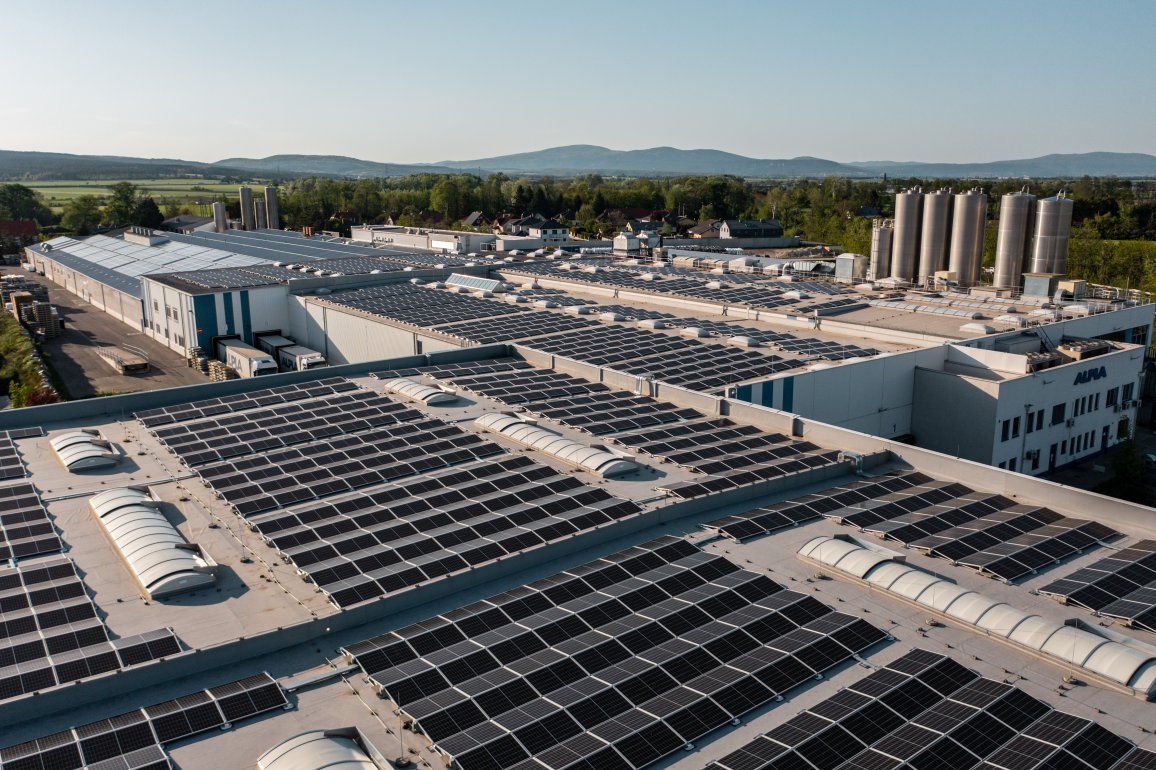Renewable energy for even more sustainable packaging
Plastic packaging made from PET and HDPE is already one of the most climate-friendly packaging solutions on the market—its carbon footprint is significantly lower than that of most alternatives. This advantage can be further enhanced through the increased use of renewable energies.

Increasing the share of renewable energy
The share of electricity from renewable sources is continuously increasing at more and more ALPLA plants, further reducing the carbon footprint of our products. Some examples from recent years are:
- In Brazil, 100% of electricity has come from renewable sources since 2025. The already very high share of hydropower in the national energy mix is fully offset by renewable energies using Energy Attribute Certificates (EACs).
- The United Kingdom has also been using exclusively renewable electricity since 2024 – contractually enshrined directly in the supply agreement.
- Since 2024, Germany has been sourcing all its electricity from renewable energies, secured through a mix of long-term power purchase agreements (PPAs) and unbundled EACs.
- Türkiye has also been operating with 100 percent renewable electricity since 2024, secured by certificates.
- In Poland, the share of renewable electricity has been 30 percent since 2025 thanks to EACs – a significant step forward in a country with heavy coal-based energy production.
PPAs and EACs – explaining the concept
A Power Purchase Agreement (PPA) is a long-term contract to purchase electricity directly from renewable sources. Flexible Energy Attribute Certificates (EACs) are necessary to prove the renewable origin of electricity and to promote investment in clean energy. EACs can be purchased independently (unbundled) of the physical purchase of electricity. This means that even if not all the electricity flowing into the plant is physically renewable, the entire consumption is covered by renewable sources in the balance sheet. In this way, ALPLA ensures that the stated share of renewable energy is credible and verified according to internationally recognized standards.
Savings of a further 90%
The example of Türkiye clearly shows the impact of using electricity from renewable sources: an average PET bottle (500 ml) emits only 20 g CO2e during the manufacturing process. Switching to 100% electricity from renewable energy sources reduces this number to just 2 g CO2e, which means a decrease of another 90%.
This has a positive effect on Scope 2 emissions – i.e. indirect greenhouse gas emissions that arise, for example, from the purchase of energy (electricity, heat, etc.) but occur outside the company's own premises. At the same time, it helps our customers to reduce their emissions in the value chain through ALPLA as a sustainable packaging manufacturer. These emissions are particularly challenging to reduce, which makes the contribution even more significant.
Climate benefits in all market segments
The use of renewable energy improves the carbon footprint of packaging in all product areas – from beverages and milk and dairy products to cosmetics and household care. On request, individual production lines can also be operated entirely with renewable electricity, enabling additional emission reductions.
These steps show that even an already very good carbon footprint can be further optimized. In addition to the use of recycled materials, the increasing use of renewable energies makes plastic packaging made of PET and HDPE even more climate-friendly – to the benefit of manufacturers, brands, and our environment.
Do you like our texts? Perhaps even so much that you want to use them in your own media? Then please get in touch with us beforehand!
